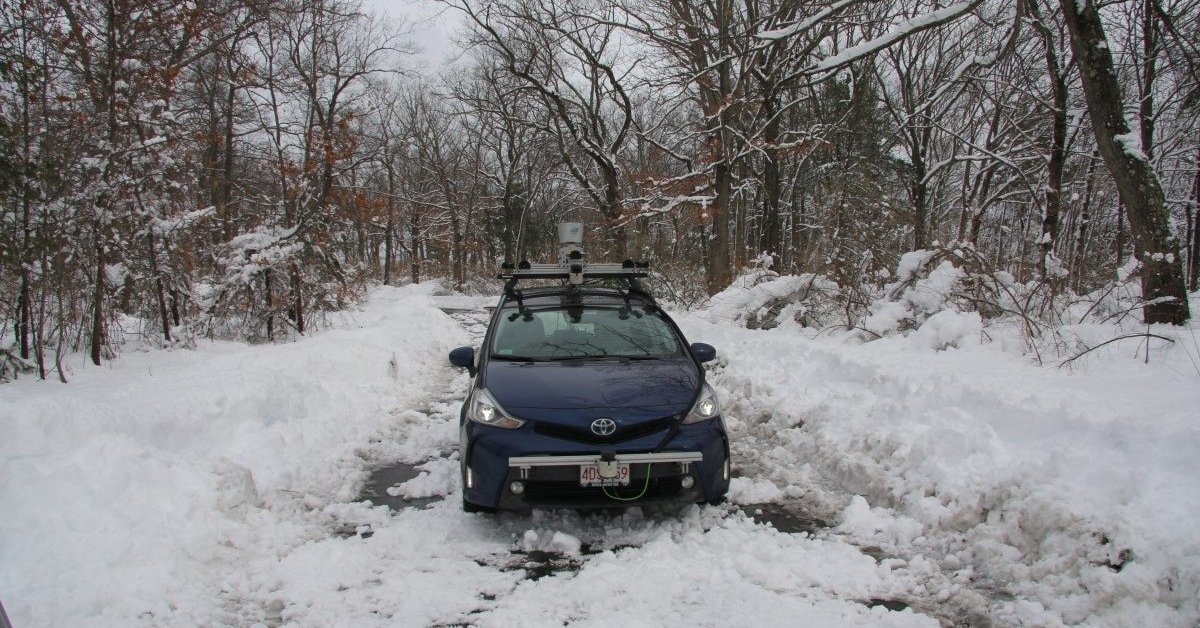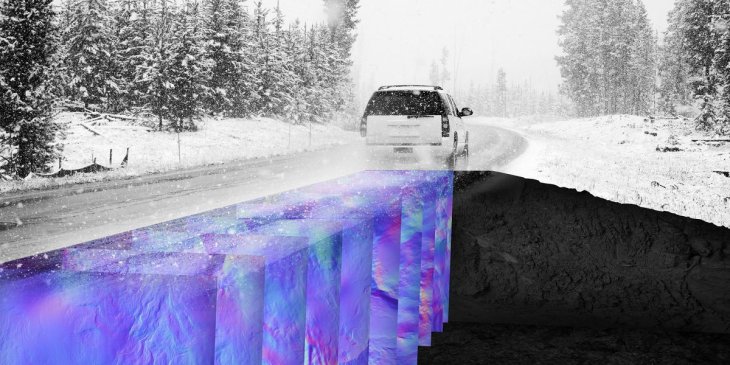MIT Researchers Help Self-Driving Cars See Beneath Snow-Covered Roads
Anil - Mar 18, 2020

As it turns out, there’s no camera or laser tool inside the system but it can calculate the quantities of specific elements under the road.
- This S.e.x Toy For Self-Driving Car Gives You A B.l.o.w.j.o.b While The Tesla Drives Itself
- These Light-Up Face Masks Can Detect Coronavirus Cases
- How To Hack Others' Dreams? MIT Scientists Got The Answer
Needless to say, the future of our automobiles is focusing on the advancements of not only eco-friendly fuels but also different self-driving technologies. Researchers from MIT recently found a way to make cars capable of “seeing” through the ground under the surface of the road. If successful, the upcoming self-driving cars will be able to give exact predictions about the road conditions, especially when the car is under the grip of bad weather like snow or heavy fog without visible road markings.

These days, most self-driving cars are taking advantage of cameras and light detection sensors (dubbed as LIDAR) whenever being on a roadway. However, once the lane markers are covered up by snow, it’s something very confusing for such self-driving cars to know where it is. Without a doubt, this is likely to result in serious accidents when the car travels at highway speeds.
To address the mentioned issue, the Computer Science and Artificial Intelligence Lab of MIT has invented a brand-new system called LGPR – Localizing Ground Penetrating Radar. The system, in a word, builds up a real-time map of the ground beneath the surface of roads.
As it turns out, there’s no camera or laser inside the system but LGPR can calculate the quantities of specific elements under the road while comparing that to an existing map it has created in advance.

As showed in a recent video, the team has introduced how the LGPR system works on a snow-covered road. Let's take a look at this cutting-edge "navigation" system.
>>> MIT Scientists Help Self-Driving Cars To Avoid Selfish Human Drivers
Featured Stories

Features - Jul 01, 2025
What Are The Fastest Passenger Vehicles Ever Created?

Features - Jun 25, 2025
Japan Hydrogen Breakthrough: Scientists Crack the Clean Energy Code with...

ICT News - Jun 25, 2025
AI Intimidation Tactics: CEOs Turn Flawed Technology Into Employee Fear Machine

Review - Jun 25, 2025
Windows 11 Problems: Is Microsoft's "Best" OS Actually Getting Worse?

Features - Jun 22, 2025
Telegram Founder Pavel Durov Plans to Split $14 Billion Fortune Among 106 Children

ICT News - Jun 22, 2025
Neuralink Telepathy Chip Enables Quadriplegic Rob Greiner to Control Games with...

Features - Jun 21, 2025
This Over $100 Bottle Has Nothing But Fresh Air Inside

Features - Jun 18, 2025
Best Mobile VPN Apps for Gaming 2025: Complete Guide

Features - Jun 18, 2025
A Math Formula Tells Us How Long Everything Will Live

Features - Jun 16, 2025
Comments
Sort by Newest | Popular